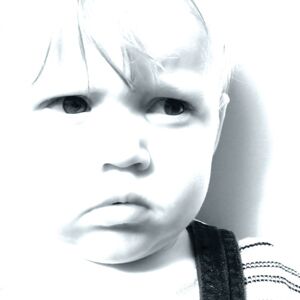
When a Kid Can’t Be a Kid
Instead of lizard-catching, running in the woods and building forts, our children’s days are increasingly filled with just-add-child toys and performance tests. This trend has some psychologists and child experts lamenting the demise of traditional childhood.
Susan Linn, psychologist with the Harvard-affiliated Judge Baker Children’s Center, is writing a book on the crying need for imaginative play. “Play is the foundation of critical thinking, the foundation of creativity,” Linn says. The value of children’s play “is beyond dispute”—and “the kind of open-ended, hands-on, imaginative and often outdoor play that has been vanishing is critical to young children’s development.” Anna Weselak, president of the national Parent Teachers Association, says “Free play is an opportunity to help increase [children’s] socialization skills, to help with creativity, and we’re continually finding research that shows there’s a link between physical activity and brain function.”
Increasingly, however, media-centric entertainment (movies, video games, television, even dolls based on popular characters) is suffocating the childhood commodity of playtime. A quick visit to the toy store reveals gobs of syndicated and movie-based toys. It’s part of the media deluge impacting the minds of children, leaving them little room to create their own worlds and learn.
Many parents use fast-paced lives to justify passing on playtime. Instead of spending time outside, or playing with their Hot Wheels in towns they create in their minds, children are thrown in front of a television screen or into a controlled environment with little room for creativity and handed prepackaged daydreams. “Toys that come with an identity and a story line mean that ‘the child doesn’t have to do anything but push a button. It’s not limitless possibilities the way it is when a child picks up a stick,’” says Linn.
Not a problem? Ask kindergarten teachers in Georgia. Play is generally not incorporated into the classroom. When it is, teachers say, the children “don’t know what to do. They have no ideas of their own” (ibid.).
“I think a majority of the country doesn’t know we have a problem, and they’re being sold a bill of goods by policy makers and the marketing industry,” Linn says.
At the same time, to be young today is to be under academic pressure. Many professionals in the child-psychology field are growing concerned.
In an open letter to the Daily Telegraph published September 12, over a hundred teachers, psychologists and children’s authors called on the government “to act to prevent the death of childhood.” “In a fast-moving hyper-competitive culture,” the letter stated, “today’s children are expected to cope with an ever-earlier start to formal schoolwork and an overly academic test-driven primary curriculum.”
But, says Sue Palmer, an author and former teacher involved in circulating the letter, “a child’s physical and psychological growth cannot be accelerated. It changes in biological time, not at electrical speed. Childhood is not a race.”
But where to start? Saving childhood starts where it is defined: in the home.
Along with encouraging real hands-on play and a less media-based diet, the open letter stated that in order to save childhood, children need “firsthand experience of the world they live in and regular interaction with the real-life significant adults in their lives”—that is, parents. One of the strongest needs a child has is for a healthy relationship with his or her parents. To learn more, click here.
